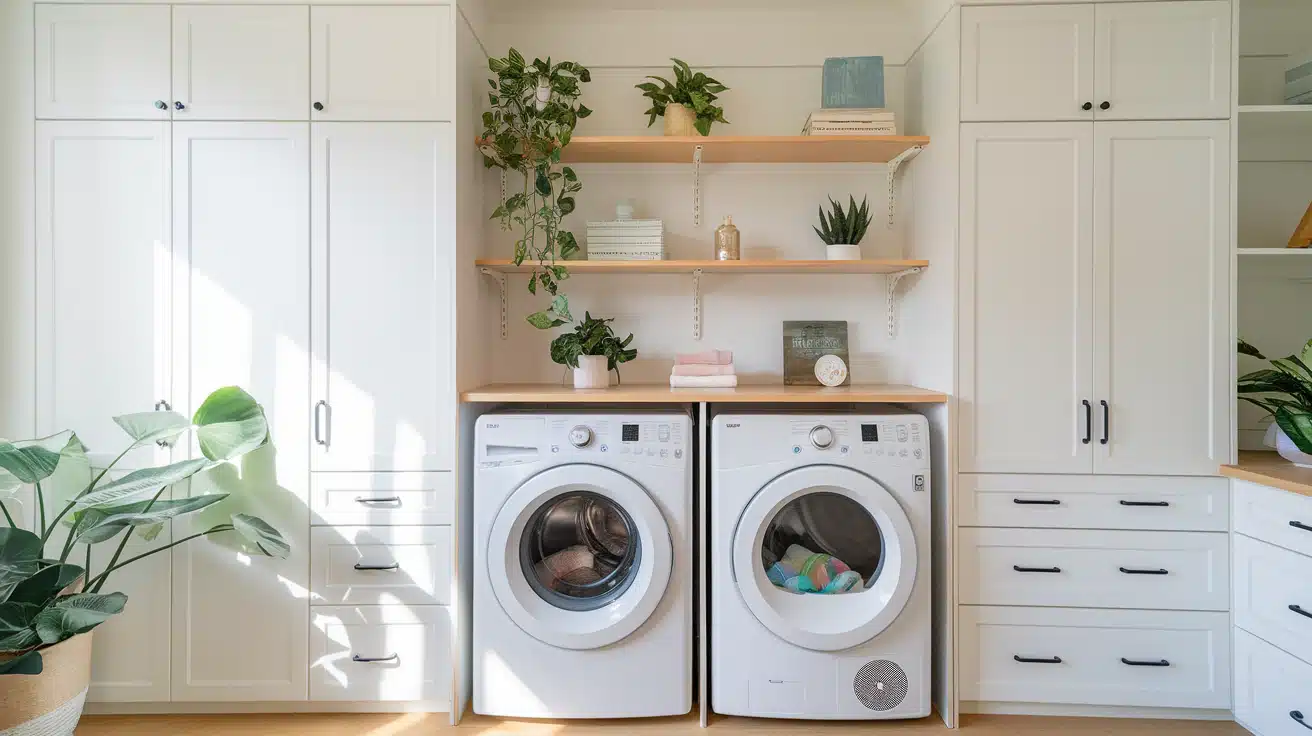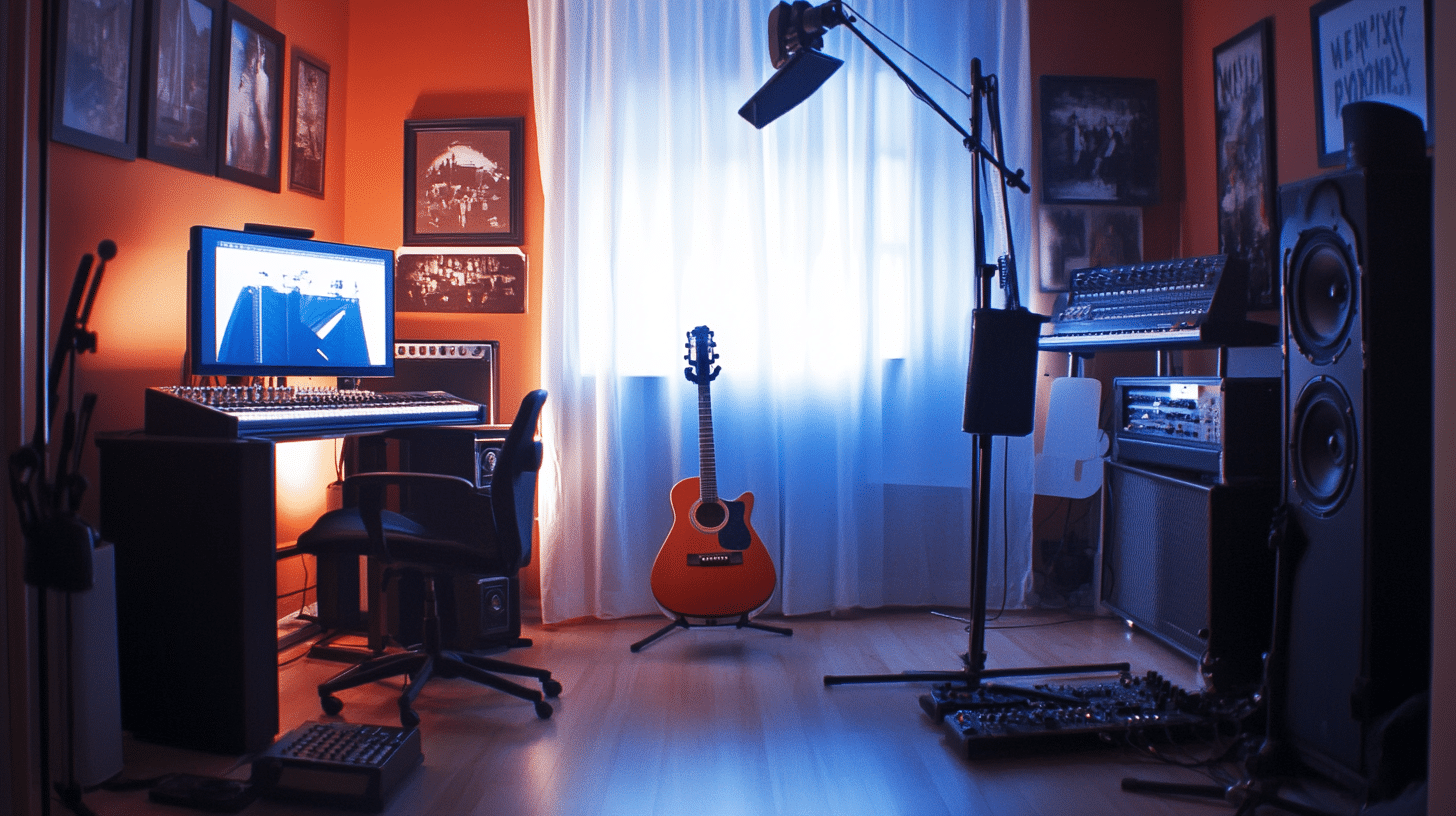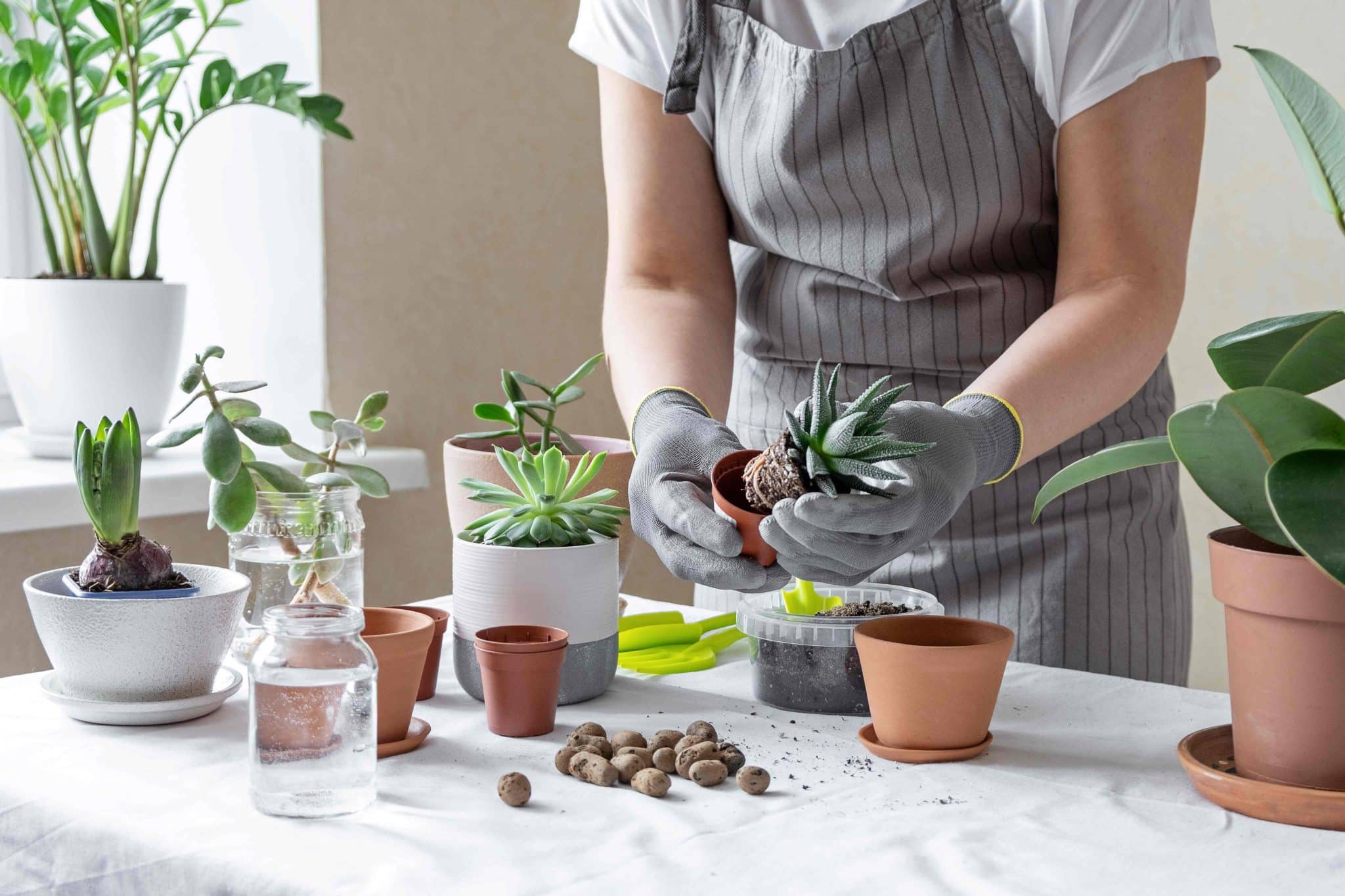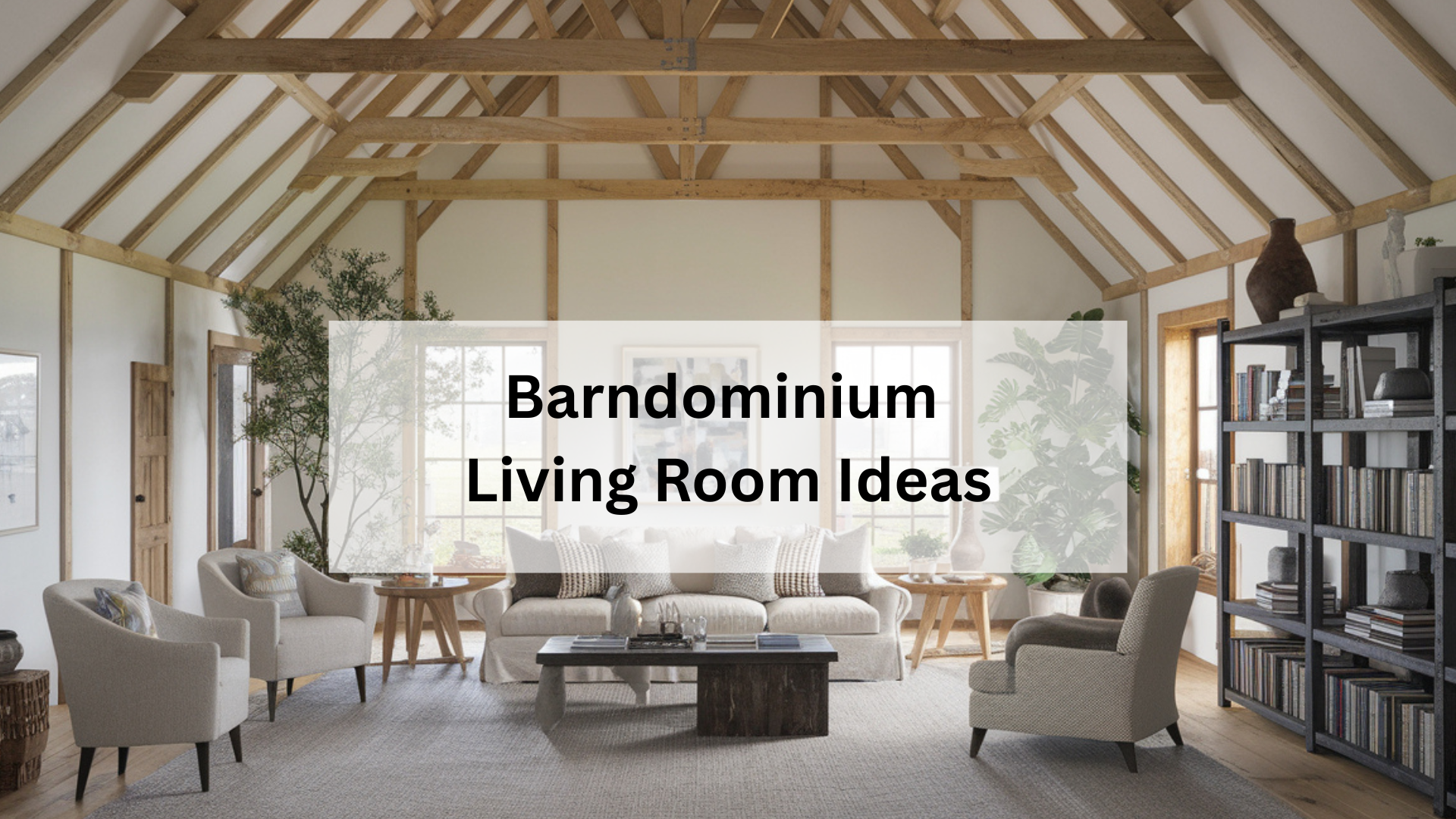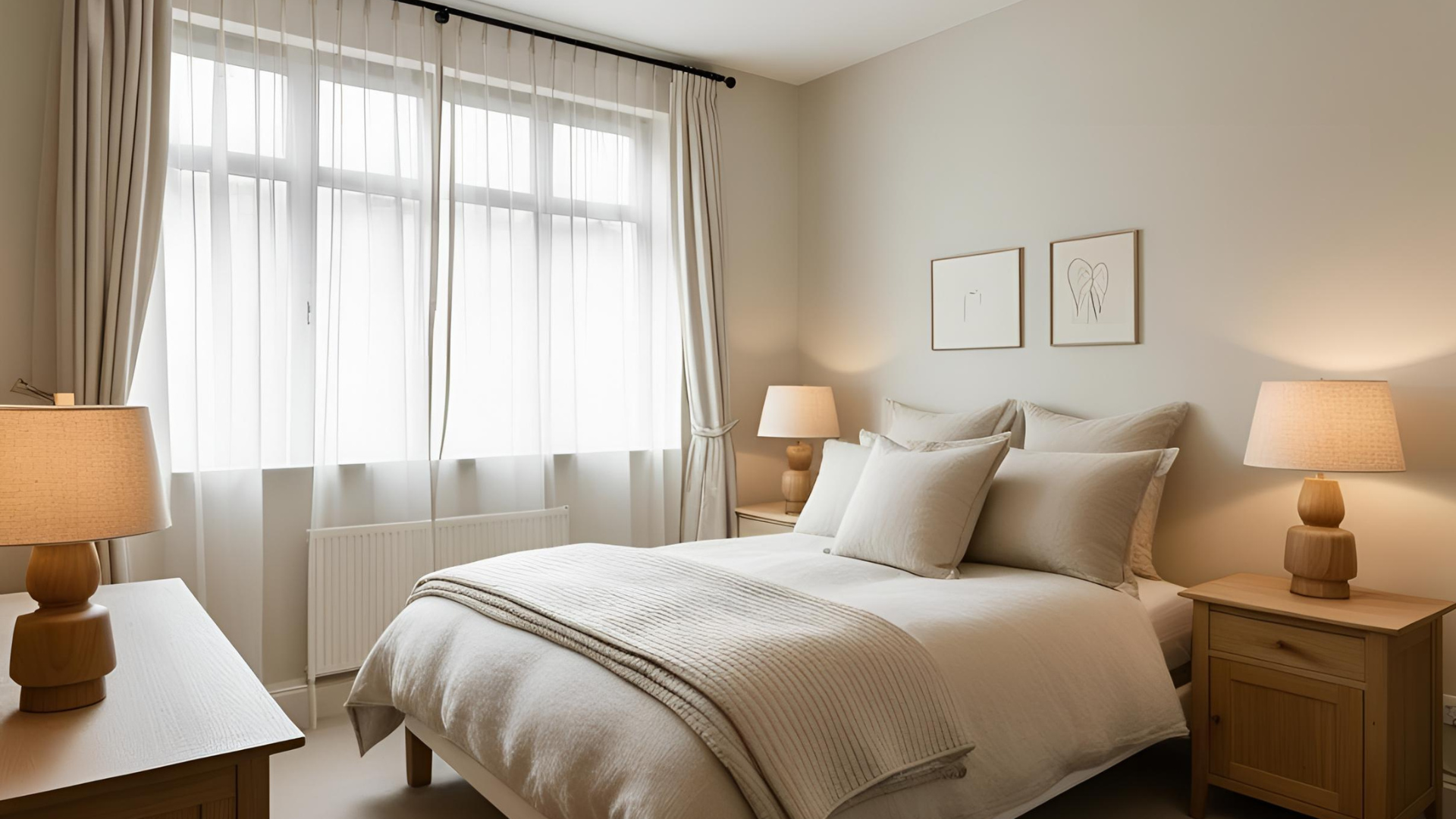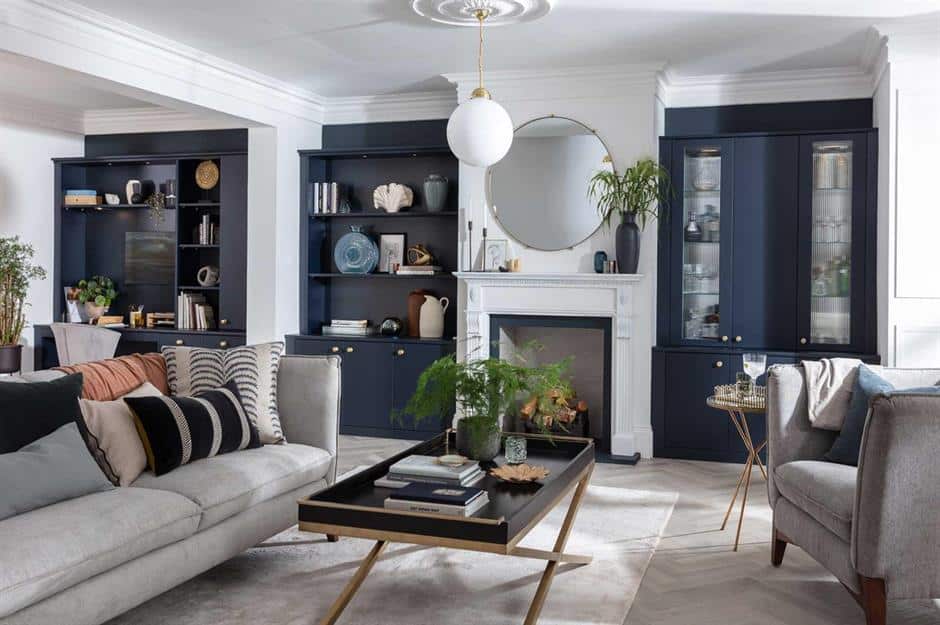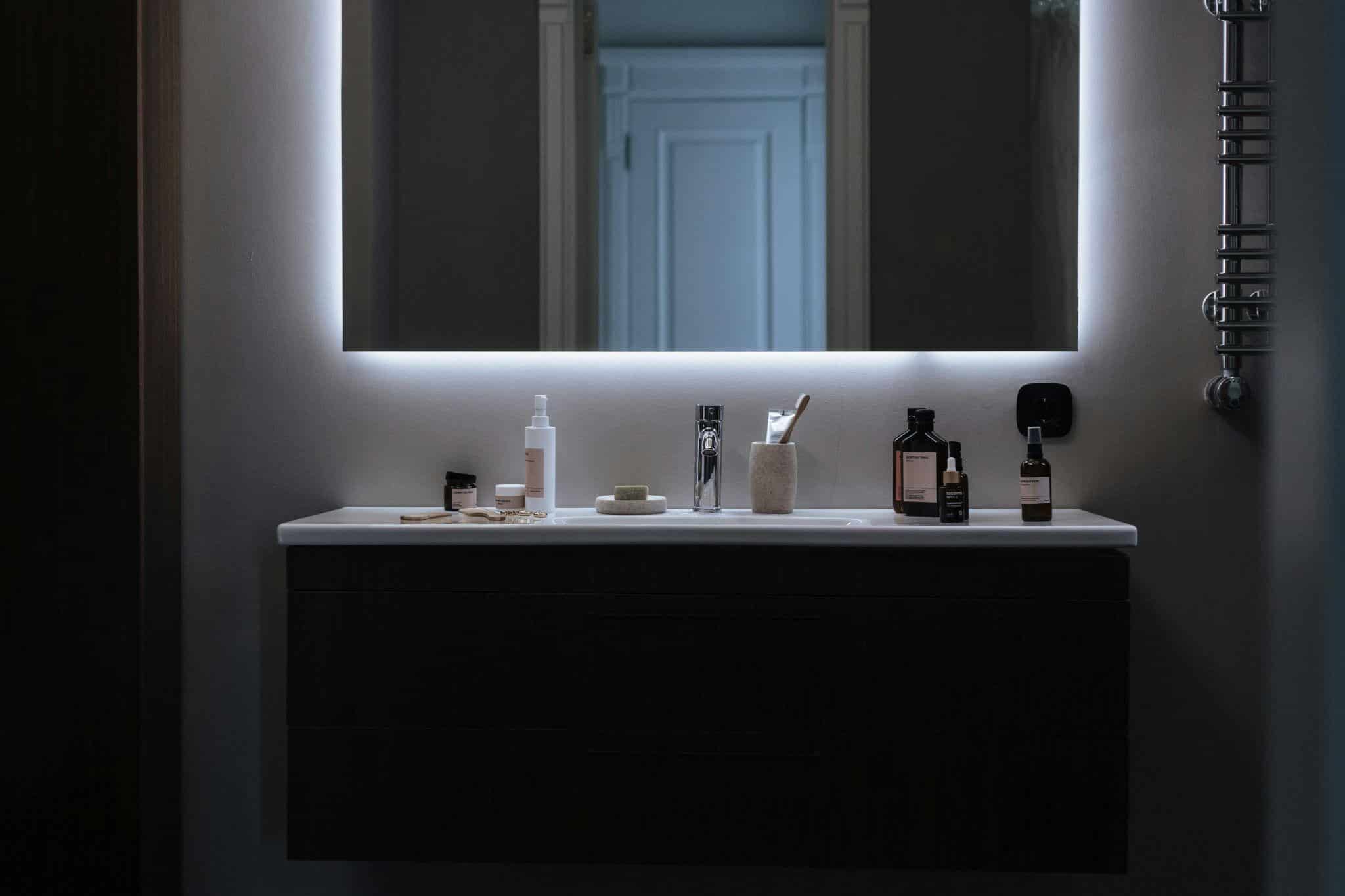Guide to Plan your Dream Laundry Room
In today’s world, even the smallest corners of our homes are getting more useful and better designed. Take the dream laundry room, for example — it’s no longer just about washing clothes.
It can be a calm, efficient space that helps you get things done without stress.
With the right setup, smart storage, and a bit of planning, this room can become one of the most helpful areas in your home.
Let’s take a look at how to create a laundry room that works for your space, needs, and routine.
Key Features for a Dream Laundry Room
A well-designed laundry room turns a routine chore into a smooth, efficient process.
It’s more than just a washing space – it’s a functional area that reflects your home’s style and meets your unique needs.
Every detail counts in creating a laundry room that works for you.
Smart Storage Solutions
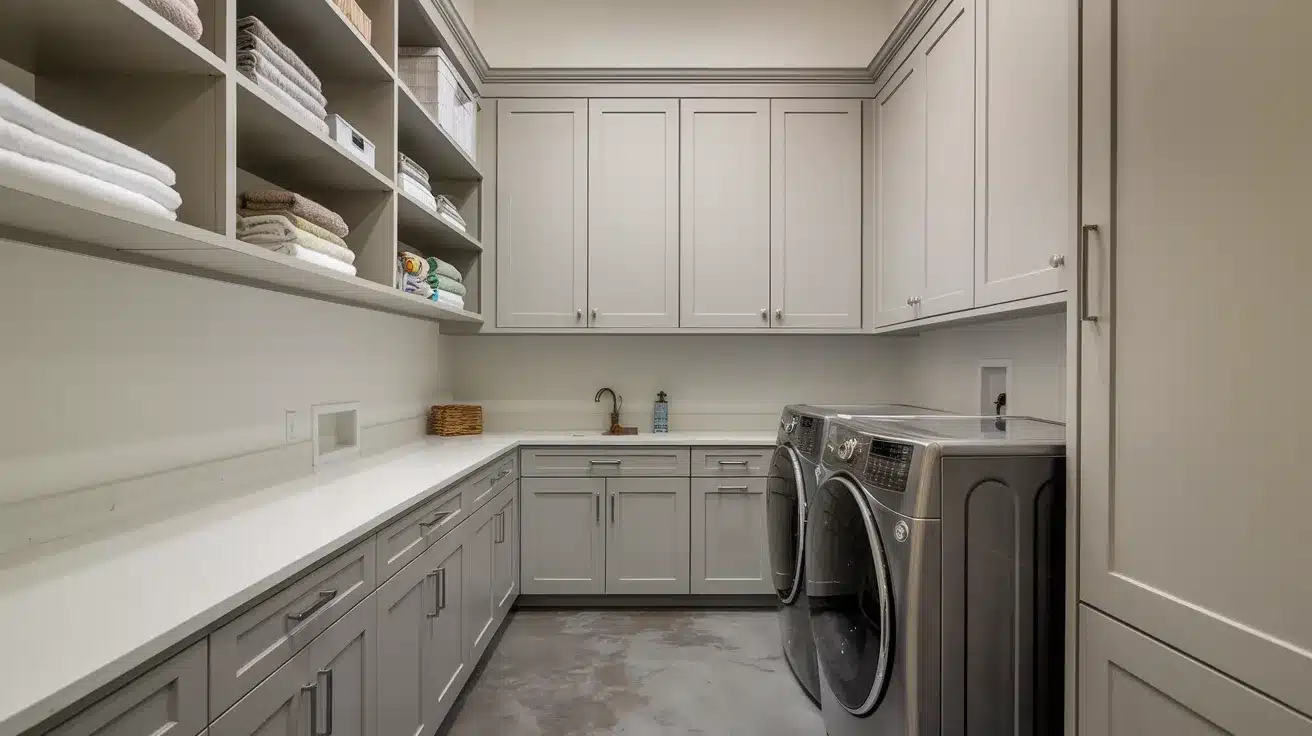
Creating an exceptional laundry space is about smart design and practical solutions.
Custom cabinetry transforms utility areas into organized havens, with floor-to-ceiling storage that maximizes every square inch.
A well-positioned 36-inch countertop provides the perfect folding station, made from durable materials like quartz that withstand daily use.
Innovative Room Features
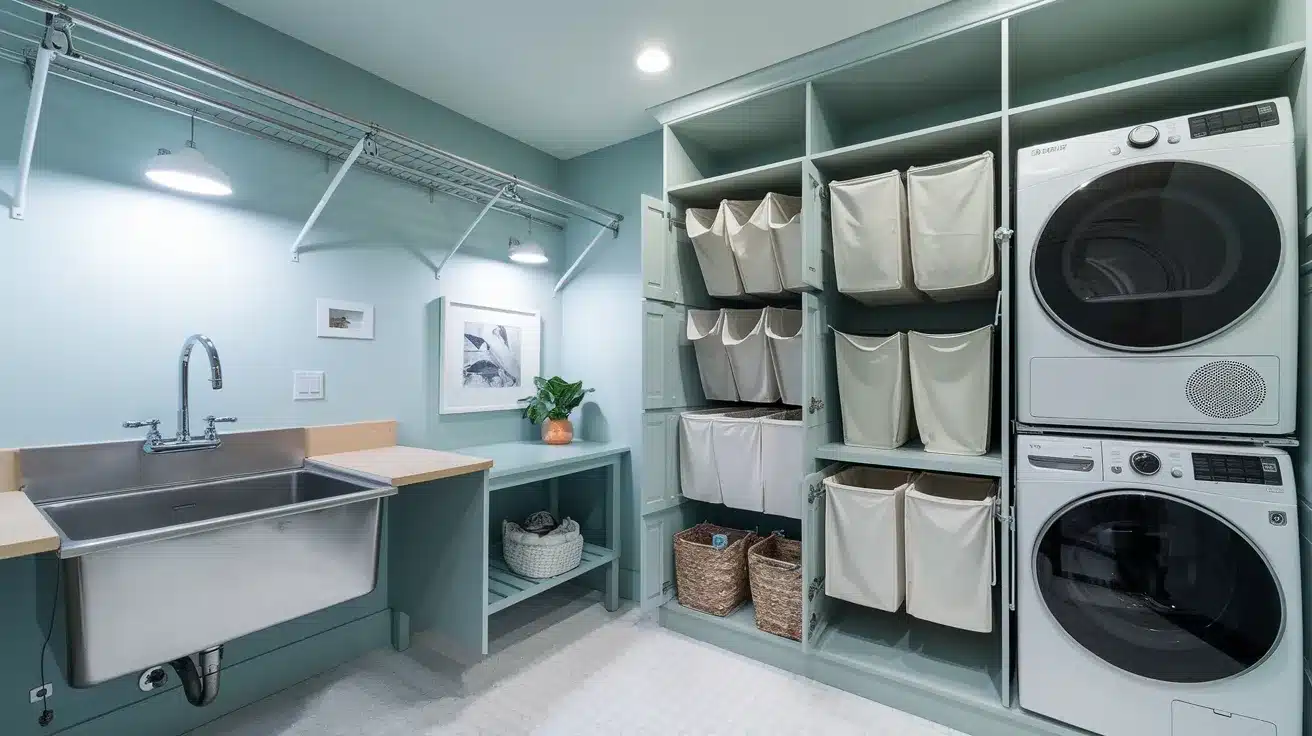
Innovative features add to the room’s function and ease of use.
A deep sink with a flexible spray nozzle handles tough stains, while wall-mounted drying racks offer flexible storage. Strategic lighting – combining ambient and task-specific illumination – brings the space to life.
Pull-out hampers with multiple compartments keep sorting simple, and smart technology integrates seamlessly with modern appliances.
Designing for Comfort and Efficiency
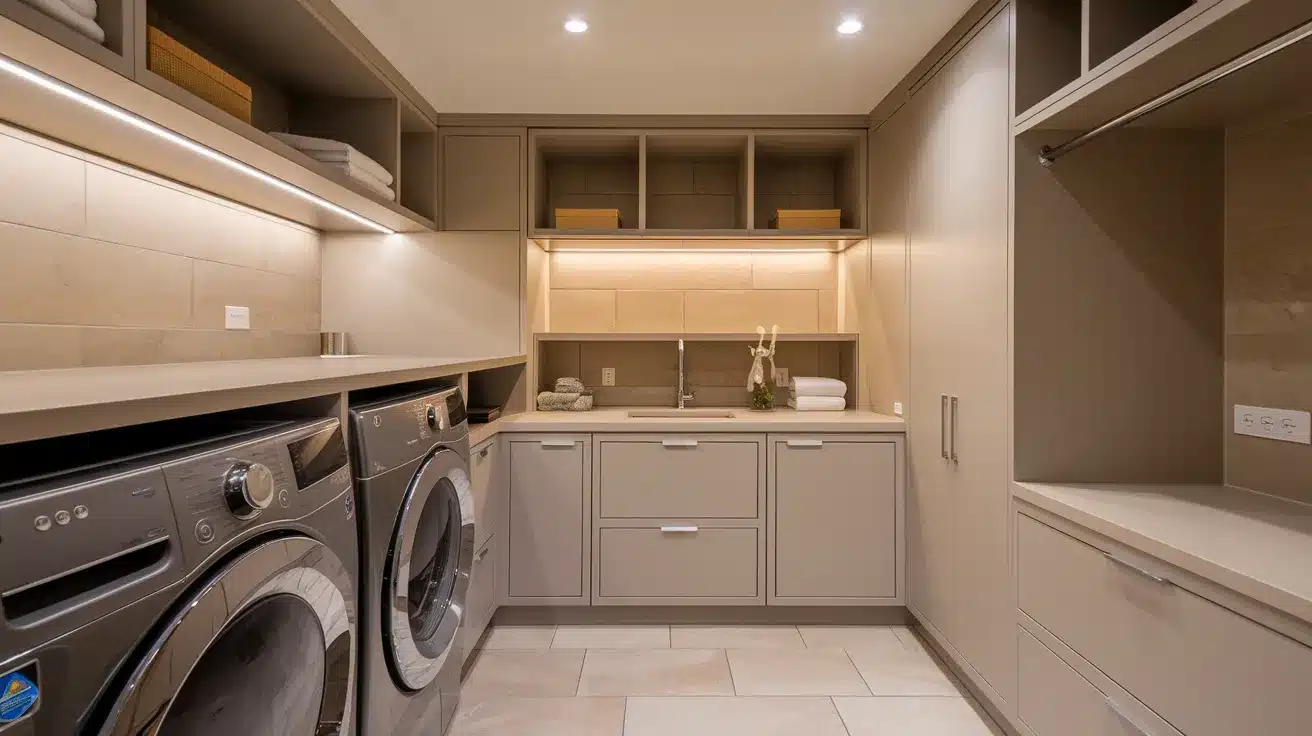
The key is balancing practicality with comfort.
Choose moisture-resistant materials, easy-to-clean surfaces, and ergonomic design that reduces physical strain.
Soft-close drawers, hidden outlets, and clever organizational systems transform laundry from a chore into a smooth, efficient process.
Your ideal laundry room should work for you – organized, funct
Popular Styles to Inspire You
Choosing a style for your laundry room can help bring everything together. Here are a few popular looks that many homeowners enjoy, each with its own feel and setup.
Modern And Minimal
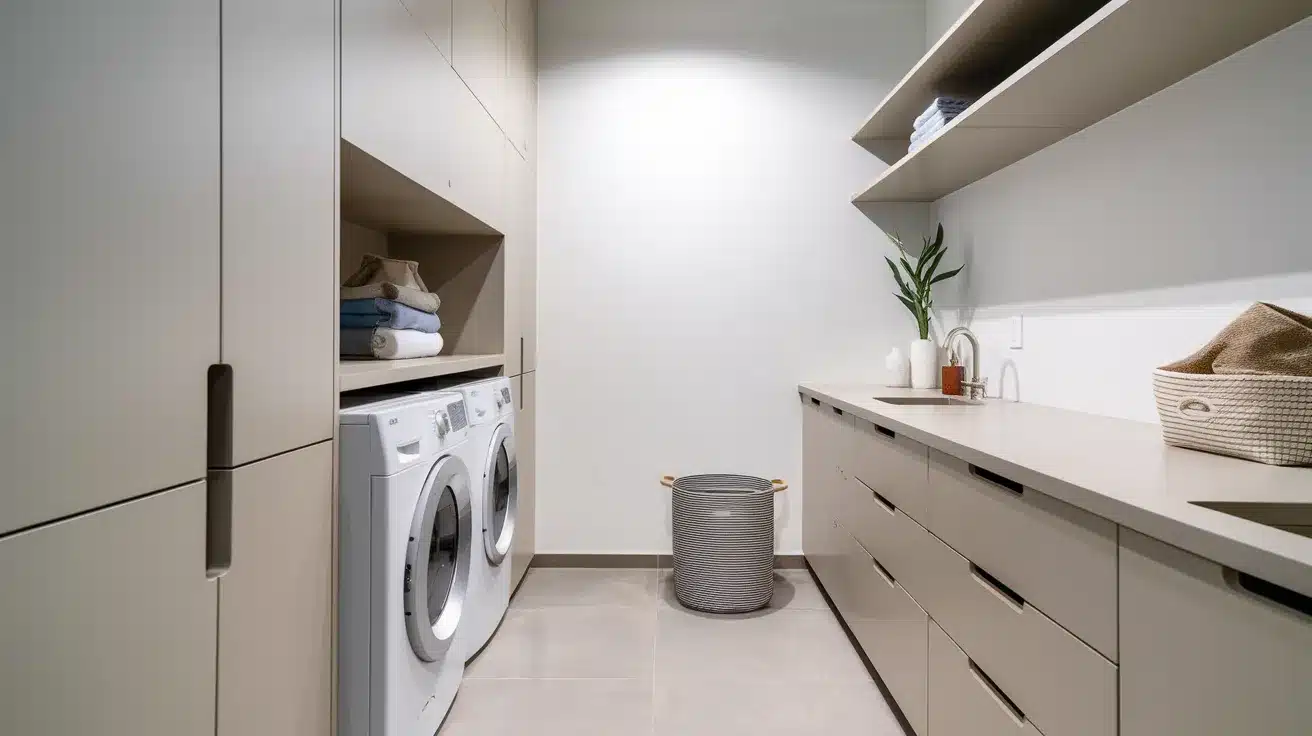
This style is all about simplicity and order. It features flat-front cabinets, clean lines, and soft, neutral colors.
Everything has a place, and clutter is kept out of sight. The design feels calm and organized, making the laundry room both practical and pleasant to use.
It’s a smart choice for anyone who values neat, easy-to-maintain spaces.
Farmhouse and Rustic
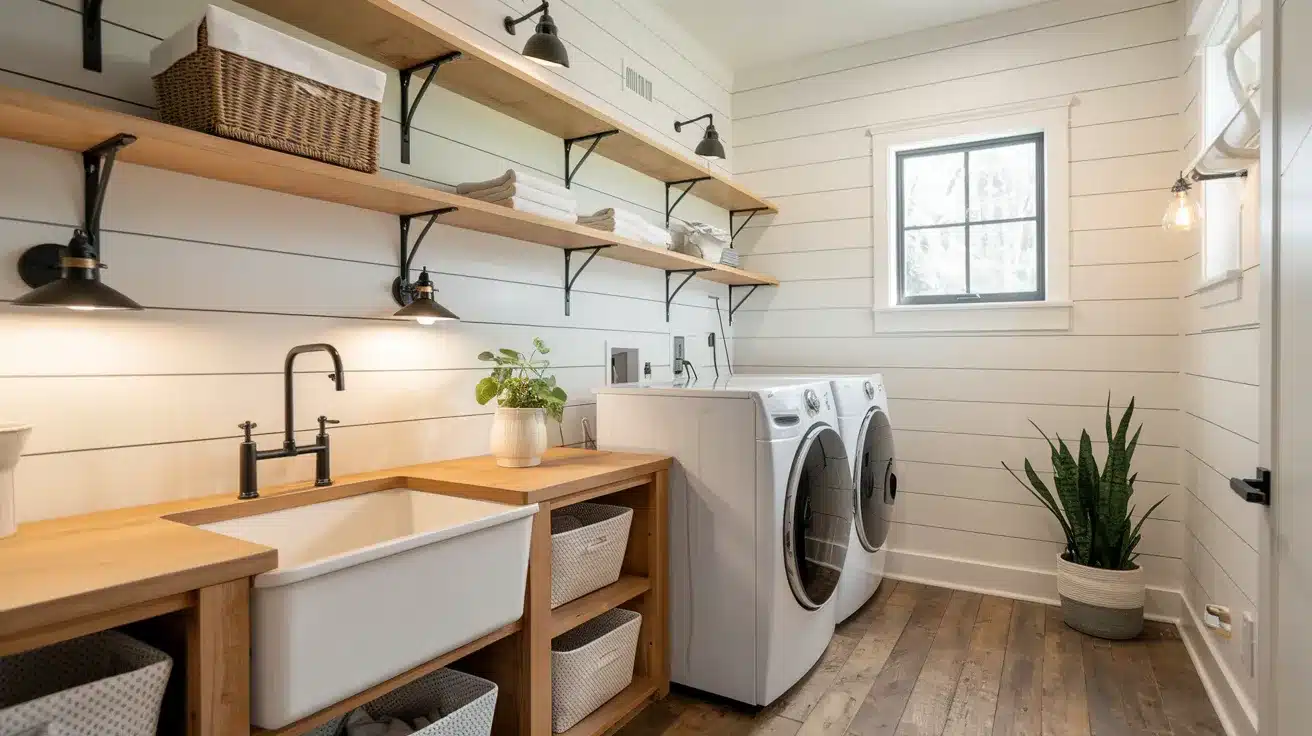
Farmhouse and rustic laundry rooms bring warmth and charm to the space. They often feature open shelving, wood accents, shiplap walls, and vintage-style sinks or fixtures.
Natural textures and warm tones create a cozy, lived-in feel. This style combines function with personality, making the laundry room feel like a welcoming part of the home.
Vintage Charm
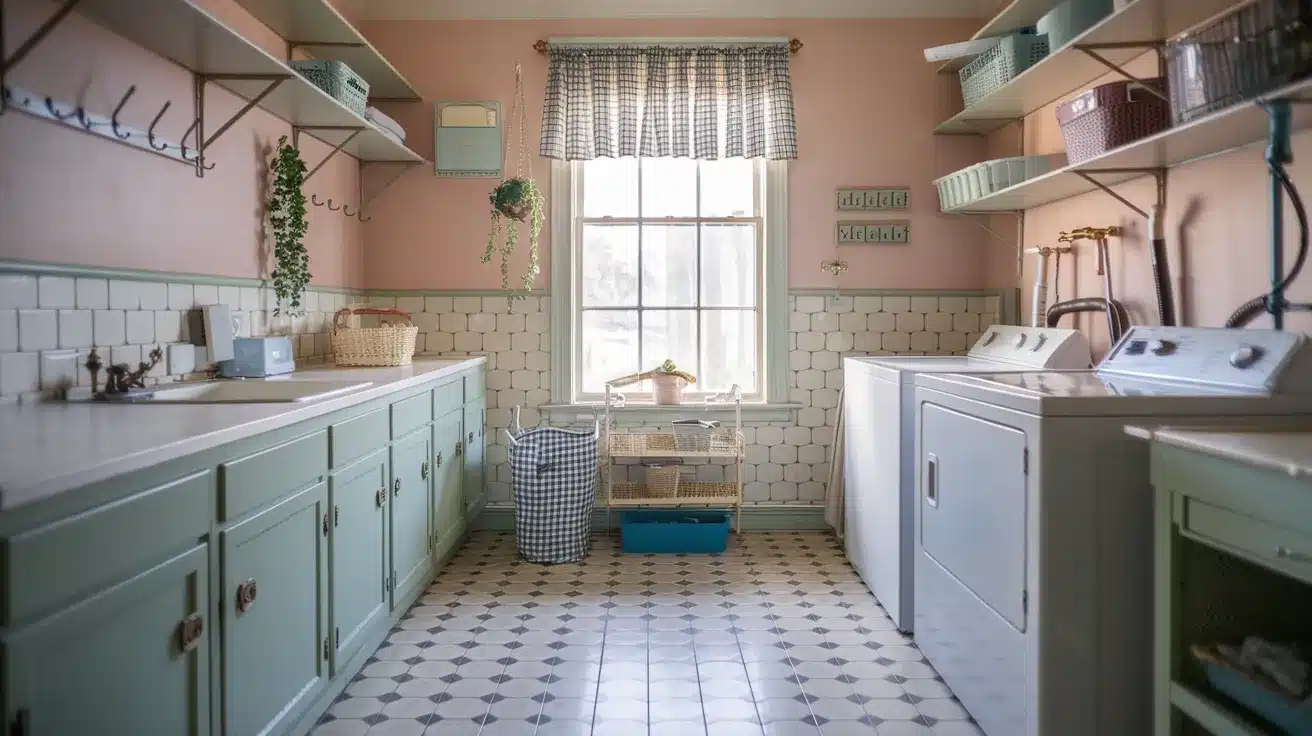
This style brings a touch of the past into the laundry room with classic design elements. Patterned tiles, soft muted colors, and vintage-style fixtures create a gentle, nostalgic feel.
Open shelving and aged or antique-style hardware add character and charm, blending old-world details with everyday function in a way that feels both familiar and useful.
Coastal and Bright
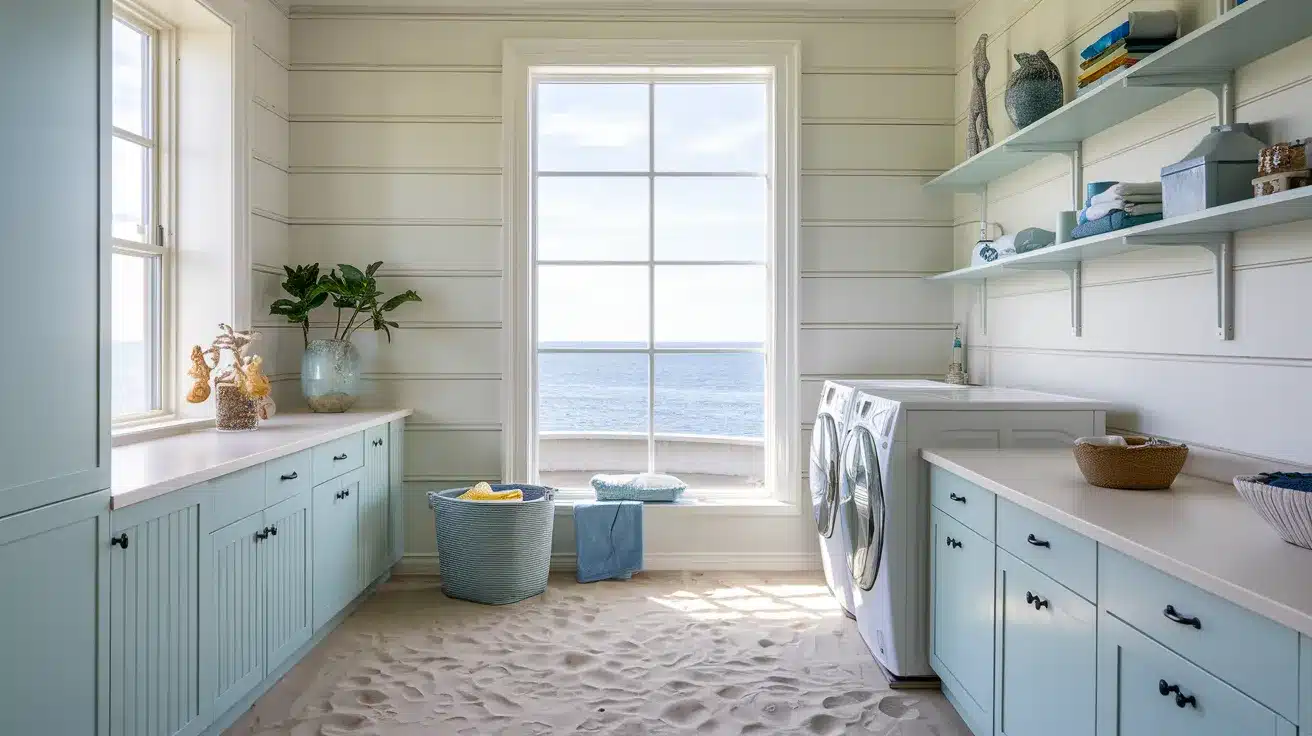
This style focuses on creating a fresh and open laundry space that feels clean and calm. Light colors like white, sandy beige, and soft blue bring a breezy, coastal touch to the room.
Open shelving, uncluttered surfaces, and natural light help the space feel larger and more inviting.
It’s a great option if you want a relaxed, low-maintenance look that still feels welcoming and well put together.
Industrial Chic
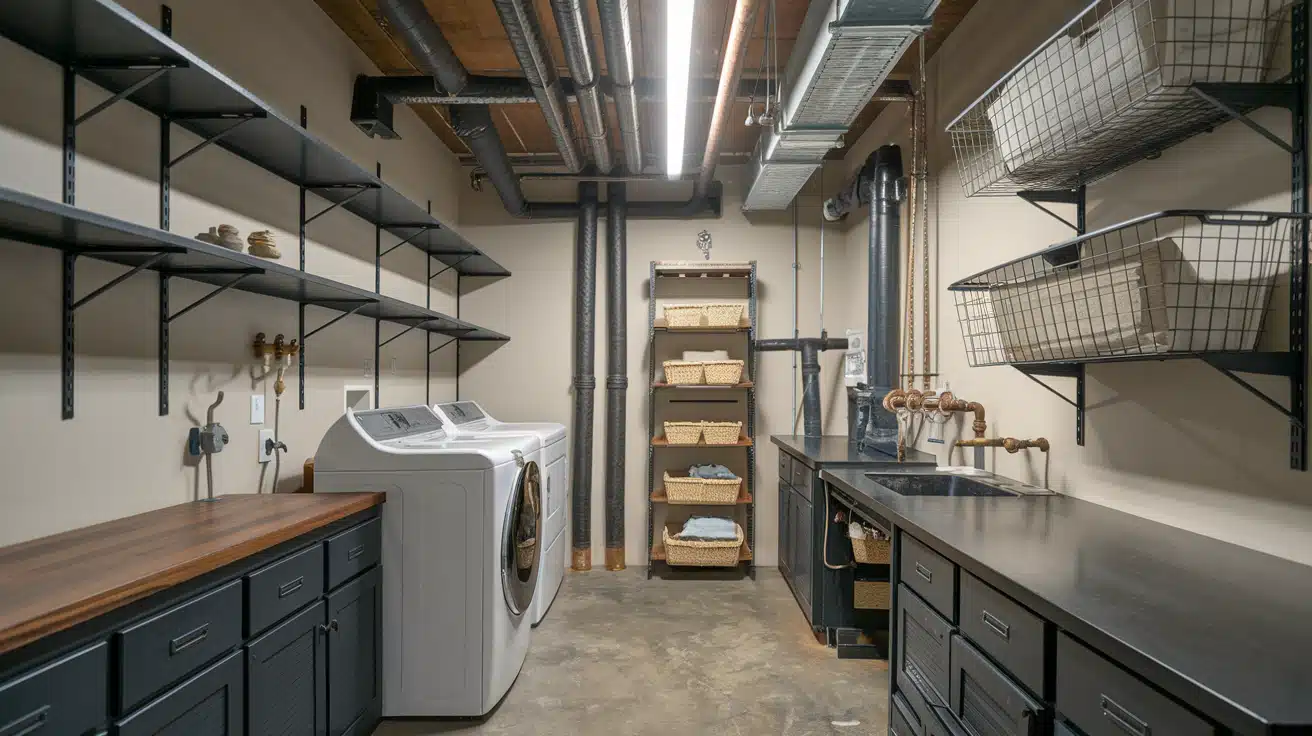
This style blends metal and wood to create a bold, practical space with a slightly rugged look. It often features open piping, wire baskets, and darker tones like charcoal or deep gray.
Strong finishes, such as matte black hardware or industrial lighting, add durability and style. It’s a great fit for those who prefer a sturdy, no-fuss design that still feels put together.
Step-by-Step Guide to Your Dream Laundry
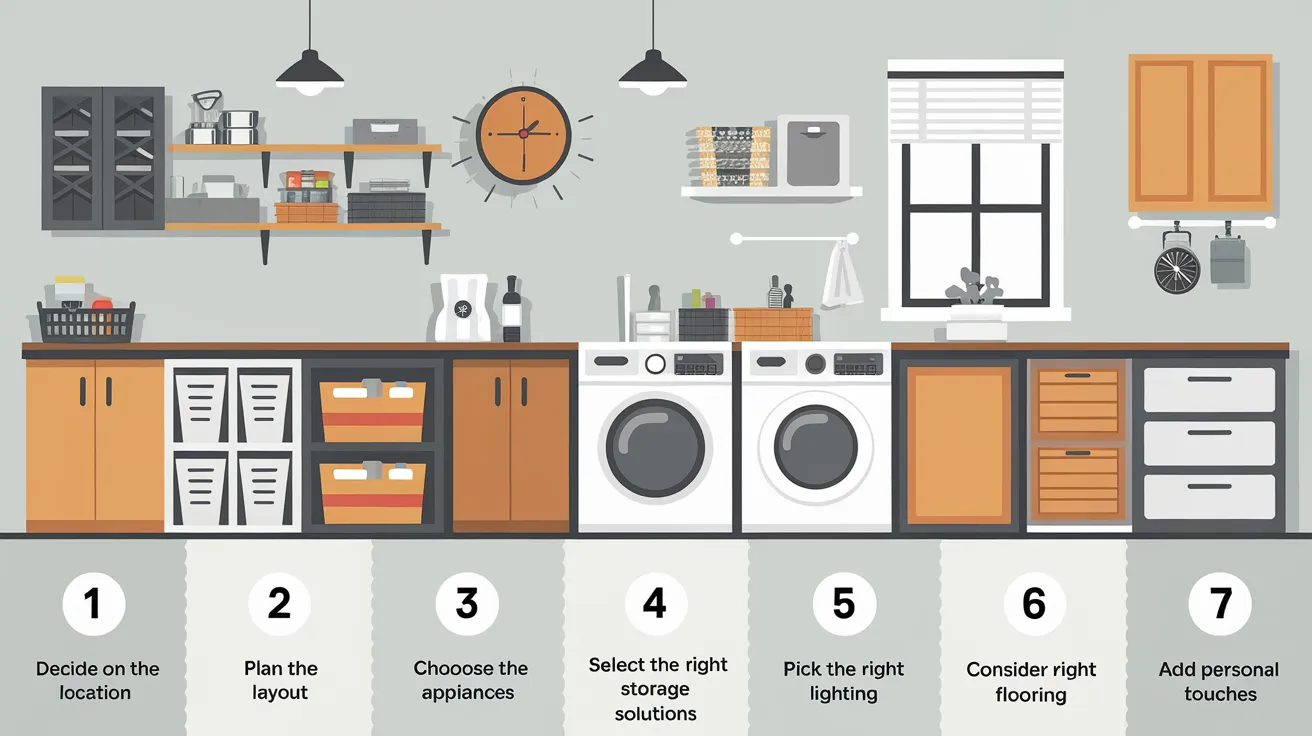
A laundry room isn’t just for chores—it can be one of the most practical and helpful spots in your home. Planning it well can save you time and make everyday tasks a bit easier.
Here’s how to get started with clear steps and questions to think about.
Creating a functional laundry room requires careful planning and attention to detail. Follow these steps to design a space that works efficiently for your household needs while also providing an organized and pleasant environment for completing chores.
Step 1: Define Your Goals and Needs
Begin your laundry room design process by establishing clear goals for the space.
Consider what functions you need most—additional storage, folding areas, or hanging space—and create lists of essential and desired features. Think about your typical laundry routines to ensure the design accommodates your actual usage patterns.
Step 2: Measure and Assess the Space
Before making any purchases, take detailed measurements of the room, including ceiling height, wall dimensions, and door clearances.
Note the positions of windows, vents, water connections, and electrical outlets, as these will influence your layout options and might require professional modifications.
Step 3: Choose the Right Layout
Select a layout that aligns with your needs. Consider side-by-side appliances with a folding counter, stacked machines to conserve floor space, or U-shaped or L-shaped configurations that maximize counter space and workflow efficiency.
Consider how people will move through the space, ensuring there’s adequate room to maneuver when machines are operating.
Step 4: Plan Effective Storage Solutions
For storage planning, think about all the items you’ll need to accommodate—from detergents and fabric softeners to baskets and cleaning supplies.
Incorporate a combination of closed cabinets for concealing less attractive items and open shelving for frequently used products. Pull-out drawers can significantly improve access to items stored at the back.
Step 5: Consider Lighting and Ventilation
Effective lighting and ventilation are crucial elements in laundry room design.
Install ceiling fixtures, task lighting, or under-cabinet illumination to provide adequate visibility for spotting stains and sorting laundry.
Ensure proper ventilation through windows, vents, or fans to prevent moisture accumulation and mildew growth. Position lights strategically above work areas such as folding counters.
Step 6: Select Practical Finishes
Choose practical finishes that resist moisture and are easy to clean, such as ceramic tile, vinyl, or sealed concrete flooring.
Select moisture-resistant paint for walls and water-resistant materials for countertops and cabinets that may be exposed to splashes.
Step 7: Add Functional Extras
Finally, improve functionality with thoughtful extras if space permits.
Consider adding a drying rod for delicate items, a pull-out hamper for sorting, or a utility sink for hand-washing and stain treatment. A compact, fold-away ironing board or a dedicated area for a steamer can increase convenience.
If you spend considerable time doing laundry, a small seating area might be worthwhile.
These carefully considered additions can transform an ordinary laundry room into a more efficient and pleasant space that makes household chores less burdensome.
Layout & Design Tips by Space Size
Designing a laundry room takes planning that fits your space. With the right setup, even a small area can become a practical and efficient workspace..
Small-Space Solutions
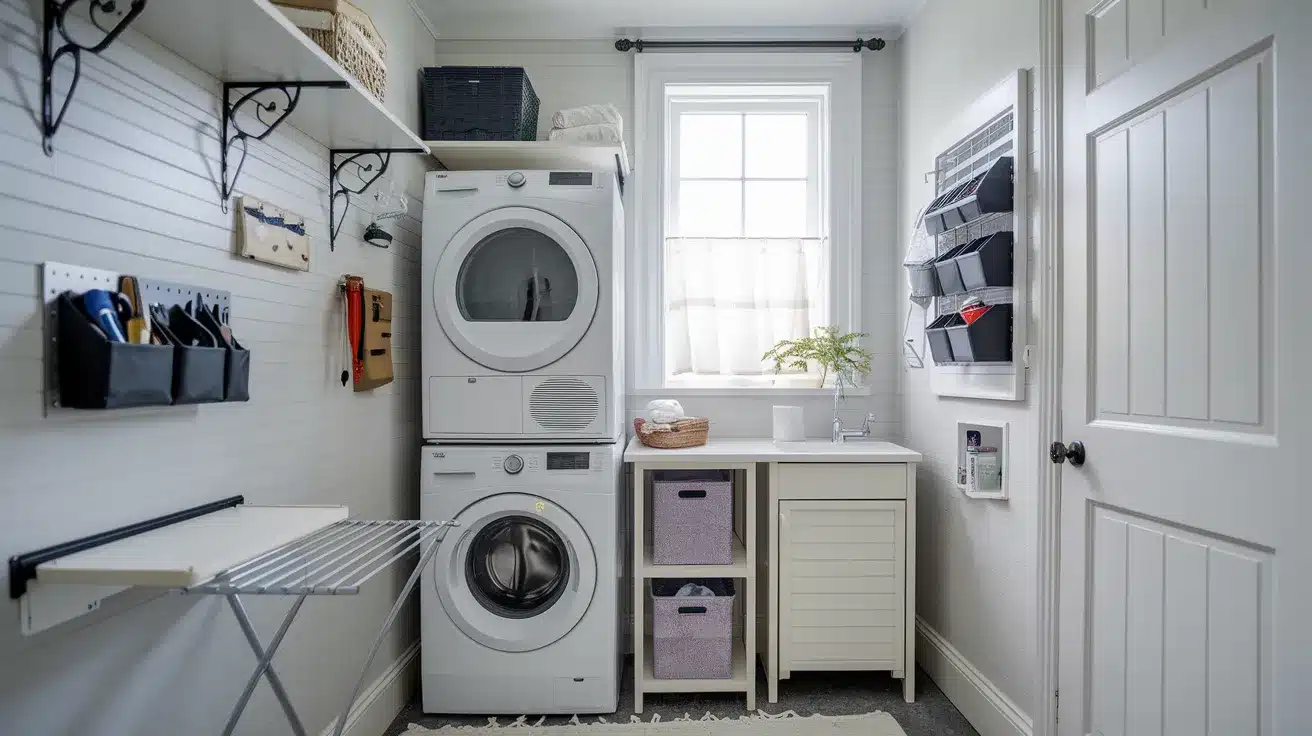
Compact laundry spaces require thoughtful and creative planning to stay functional. In apartments or narrow rooms, using vertical space is key.
Wall-mounted shelves, fold-away drying racks, and stackable washer-dryer units help maximize the area without feeling cramped.
Sliding cabinet doors can save valuable room, while magnetic strips are great for keeping tools organized and accessible.
Compact rolling carts add flexible storage and can be tucked away when not in use.
Features like fold-down ironing boards and over-the-door organizers make it possible to turn even the smallest corner into a complete and efficient laundry zone.
Medium-Sized Laundry Room Layouts

Medium-sized laundry rooms offer greater flexibility in layout and design. With more space to work with, you can create an efficient setup that supports your routine and keeps everything organized.
An L-shaped or U-shaped layout works well, helping to establish natural zones for washing, drying, folding, and storage.
A sturdy countertop provides a convenient surface for folding clothes, while cabinets placed above and below offer valuable storage for detergents, cleaning supplies, and linens.
Including a utility sink adds practicality for hand-washing and treating stains. A hanging rod is also helpful for air-drying delicate items. Pull-out hampers make sorting laundry easier and help keep the space neat.
Good lighting is essential in a laundry room. A mix of ceiling lights and task lighting will keep the area bright and functional, making everyday chores feel a little easier.
Large and Luxury Laundry Setups
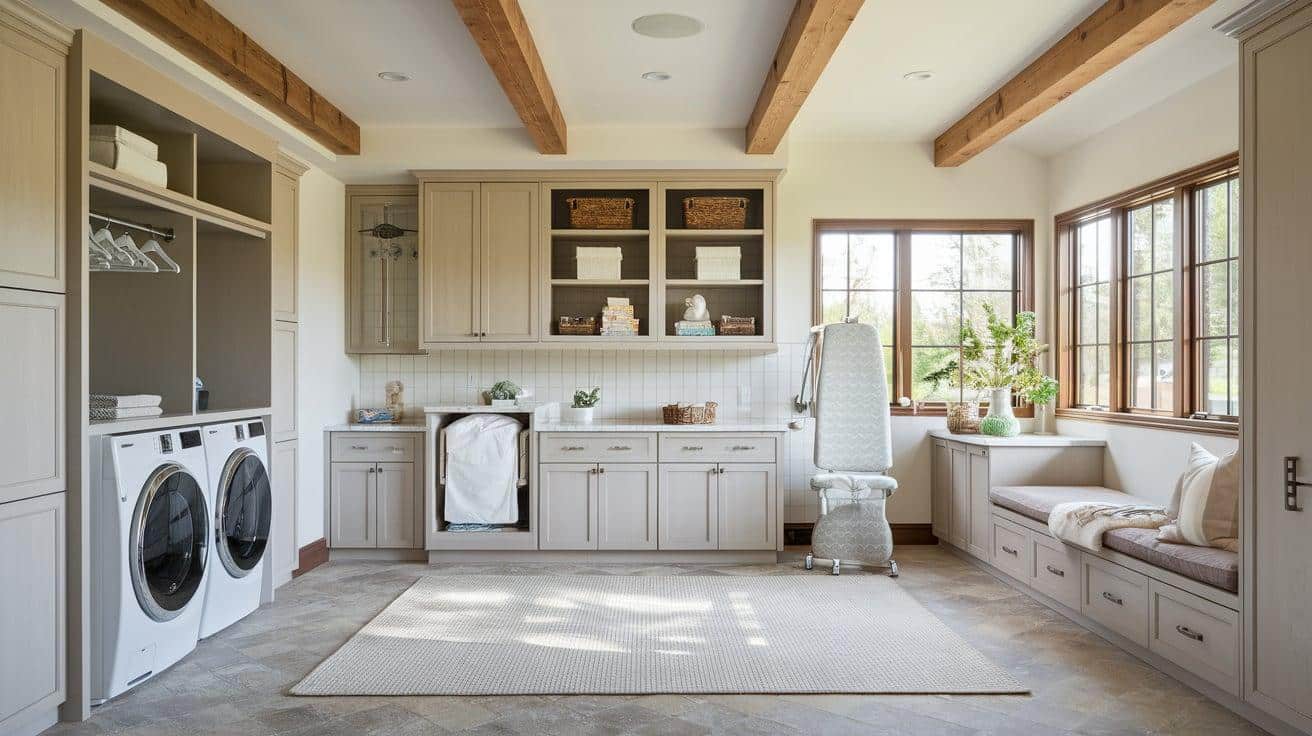
Large laundry rooms offer the chance to go beyond basic function and create a well-rounded, comfortable space.
With more room to work with, you can design clear zones for washing, drying, folding, and storage, making your routine easier and more efficient.
You might install multiple appliances, such as a steam washer, a dedicated drying cabinet, and a built-in ironing station.
Custom cabinets can hold everything from cleaning supplies to seasonal linens and other household items, keeping the space tidy and organized.
There’s also room to add personal touches. A small desk or reading nook, soft flooring underfoot, and thoughtful design features can turn the laundry room into a pleasant extension of your living space
Universal Design Principles
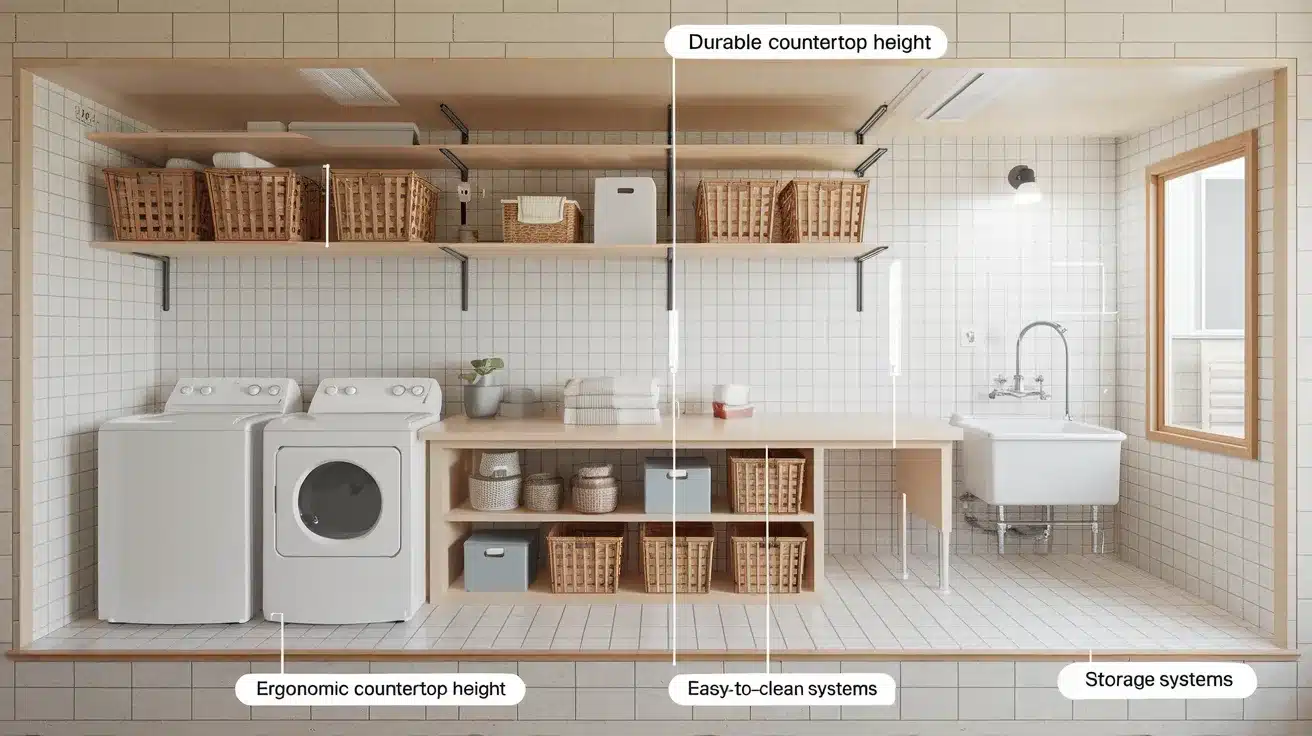
Regardless of size, successful laundry room design focuses on three key elements:
- Efficient workflow
- Smart storage solutions
- Comfortable working height
- Choose materials that withstand moisture, prioritize easy-to-clean surfaces, and think about ergonomics.
The goal is creating a space that simplifies your routine and makes laundry tasks more manageable.
Laundry and Mudroom Combos
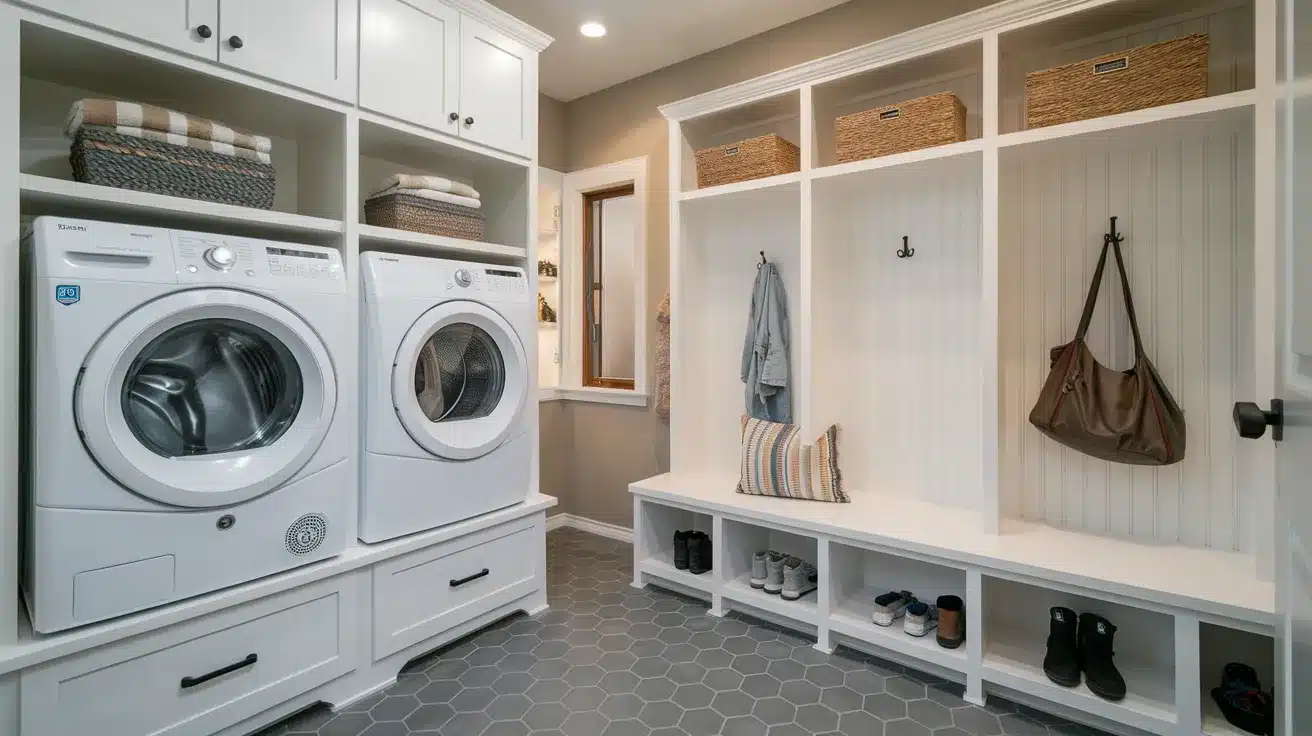
Combining laundry and mudroom functions creates an efficient, organized space that handles multiple household tasks in one area.
Design Strategy
Successful combo spaces blend practical storage with smooth traffic flow. Divide the area into clear zones: entry, cleaning station, and storage hub.
Position washers near the entry to catch dirty clothes and outdoor gear immediately.
Smart Storage Solutions
Custom cabinetry is crucial. Design built-ins to accommodate: Use hooks at multiple heights, deep cubbies, and adjustable shelving to maximize vertical space.
Create a logical workflow: dirty items enter, get sorted, processed, and clean items stored.
Common Mistakes to Avoid
Smart organization transforms spaces from cluttered chaos to functional, efficient environments that simplify daily living and reduce stress.
1. Poor Lighting Troubles
Dark spaces make organization challenging. Shadows hide clutter and make rooms feel smaller. Add under-cabinet lights in kitchens.
Install LED strips in closets. Place task lighting near work areas.
2. Counter Space Limitations
Cramped surfaces create instant chaos. Compact rooms need smart solutions. Add fold-down tables that attach to walls.
Use mobile kitchen islands with built-in storage. Consider sliding cutting boards or expandable work surfaces.
3. Moisture and Airflow Issues
Trapped humidity destroys storage efforts. Damp spaces ruin clothes and supplies. Drop silica gel packets into storage containers.
Open closet doors periodically. Use small fans in tight areas. Select moisture-resistant materials for long-term storage.
Conclusion
Transform your laundry room from a basic chore zone into a space that feels practical, comfortable, and easy to use. With the right approach, even the most routine tasks can feel less stressful and more satisfying.
Smart design goes beyond just looks—it focuses on how the room works for your daily needs. By combining functional storage, bright lighting, and simple personal touches, you can create a space that supports your routine and feels good to spend time in.
A well-planned laundry room doesn’t just clean clothes—it helps you stay organized, save time, and enjoy the process a little more.
Frequently Asked Questions
How much space do I need for a laundry room?
It depends on your setup. A compact laundry area can fit into as little as 3 to 4 feet of width with stackable machines, while a full-size laundry room might need 6 to 10 feet or more.
What are the best materials for laundry room countertops?
Quartz, laminate, and butcher block are popular choices. They’re easy to clean and hold up well against water and heat.
Can I combine my laundry room with a mudroom?
Yes, combining the two can save space and help keep dirty clothes, shoes, and gear in one spot. Just be sure to divide the space into clear zones.

